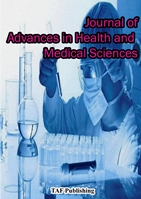
|
Published online: 2018
Abstract
This present study aims to assess the Placenta Neutrophil Count (PNC) as an early marker in the diagnosis of Neonatal Sepsis (NS). This study was conducted in February-May 2017. Cord blood samples and placental tissues were taken from 15 newborns at risk of sepsis (case group) and without risk of sepsis (control group). The PNC was estimated using a conventional light microscope. We also measured some oxidative stress parameters from the cord blood samples, i.e., hydrogen peroxide (H2O2), thiocyanate (SCN), myeloperoxidase (MPO) enzyme, and Advance Oxidation Protein Products (AOPPs) to investigate the role of neutrophil in the placenta. The results show that the PNC, the level of AOPPs and SCN, and MPO activity of cord blood were higher in the case group than the control group, while the H2O2 level shows the opposite result. From these results, it can be assumed that neutrophils have a role in NS and might be used as a potential marker for the early prediction of NS. These findings need to be verified by further investigating fresh samples in a larger, prospective cohort and sophisticated analysis evidenced by deep sequencing. The placental pathologic and histologic examination has been used as a diagnostic tool for neonatologists in many neonatal diseases, except NS. This result suggested that PNC might be used as an early predictor for NS. |